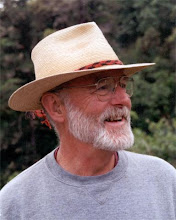What follows is a book review I wrote several years ago. While I might not write exactly the same thing now, it does address some issues around neoshamanism that are relevant today....
The review is from: Shamanism: Traditional and Contemporary Approaches to the Mastery of Spirits and Healing (Paperback)by Jakobsen
This book has two parts. First, it is a description of the beliefs and activities of shamans in Greenland beginning in the 1700's, as reported by missionaries and anthropologists. Secondly it is a description of contemporary neoshamanic activity, particularly in shamanic training workshops conducted by one teacher in Europe. Jakobsen poses a critical distinction between the spiritual worlds of indigenous shamans in Greenland and that of contemporary new age shamans, and concludes that new age shamanism should not be called shamanism at all. Rather, it should be termed "shamanic behavior."
For serious students of shamanism who have read extensively in the anthropological literature, this difference in the beliefs of indigenous and contemporary shamans is not new. Harner's sanitizing of shamanism altered the student/spirit relationship from one of fear, awe and mediation of forces outside of themselves, to one of consorting with one's benevolent teachers and helpers. It is apparent that the reduction of the "fear factor" in shamanism has attracted more workshop attendees.
Jakobsen, unlike neoshamans, reminds us that the spirits of the Greenland shamans did not emanate from their psyche, were not projections of self, did not reside in a collective unconscious. There were no seeds of imaginal shamanism. Today, the neoshaman creates the spirits, thereby imposing order and morality on an otherwise fearsome universe. I heard a respected teacher in the Harner cadre tell a group of beginners that they would have to "teach your power animals how to behave." Such a notion would shock an indigenous shaman.
The origins of imaginal, neoshamanism don't lie in shamanism at all, but rest on the foundation set in the humanistic psychology and human potential movement that emerged at Esalen in the sixties. Harner and Castaneda reap the benefits of the movement. In a framework where all is seen in terms of humanistic psychology, neoshamans master the spirits by not inviting the dangerous ones to the party. Touching upon the origins of neoshamanism would have helped this book. Jakobsen says "here they are and this is what they are doing," but she doesn't say "why."
Jakobsen's reports of her experiences in neoshamanic workshops are good samples of both the rituals and the anecdotal accounts of the participants. The descriptions of the workshops and people in them were all too familiar. She is fair in her reporting. It is interesting that the course leader with whom she studied the most, refused to allow the use of his name. Coercive harmony dominates neoshamanic training.
Jakobsen's book is a valuable addition to a discussion of shamanism. It asks us to consider where we place ourselves in the cosmos. Perhaps it will stimulate more examinations of the many aspects of the neoshamanic movement. More likely it will be seen by neoshamans as negative and critical.
Subscribe to:
Post Comments (Atom)

No comments:
Post a Comment
Thank you for your comment. After review it will be posted. This can take up to a day or two.